|
F1 India GP に犬が侵入し、一時レースが中断されたそうです。
犬達も車に負けまいと張り切るのでしょうか?
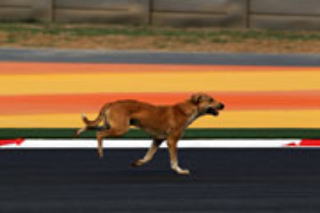 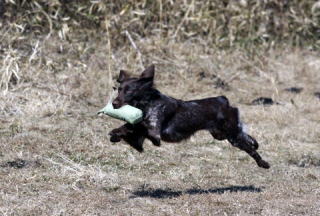
F1 Indian GP に乱入した野犬?
インドではウシ、サル、ゾウ、ネズミ等は聖なる動物として崇められています。一方イヌは野犬が多く、住民に可愛がられつつもたくましく生きているらしい。一方狂犬病などの病気も問題となっているとのことです。 |
|
"Pyrenian mountain dog" という名前でも知られているこの犬の先祖犬は世界最古の"Tibetan Mastiff " といわれています。犬種としては原始的な部類に属し、血統的に狼に近い犬種です。四肢にその名残りとして”狼爪”を有し、前肢に1本、後肢に2本認めます。
紀元前からピレネー山脈で牧羊犬として働いて来ました。17世紀後半にフランス貴族の目に留まり、宮廷の番犬として飼われることになり、1675年には、ルイ14世によって「フランス王室犬」に定めらました。
初期のグレート・ピレニーズが移住者とともにカナダに渡り、同じくイギリスの移住者が連れて来た黒のリトリーバ種と交配され"ニューファンドランド"や"ランドーシア"が生まれました。
現在は大きく分けて、①足が長くて、顔立ちがエレガントな昔ながらの姿を留めているフランス・タイプ。②一番大きく骨量豊かで雄大なイギリス・タイプ。③毛量の豊富な愛らしいショー・キャラクターのアメリカ・タイプの3タイプに分かれています。
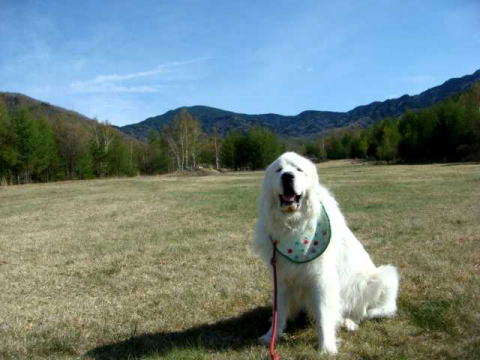
Cotten in Vi-Bridge (Cotten パパさん提供)
|
|
KLMの故郷ミュンスターはオランダとの国境に近いドイツ北西部ヴェストファーレン地方の中心都市です。街を運河が通過し、堀を廻らせた”水城”が100以上点在しています。ミュンスター市を中心として半径40~70kmの起伏のない平野部が”ミュンスターラント”と呼ばれています。
ミュンスターの歴史は739年フランク王国のカール大帝がこの地を支配下に治めようとして修道院を建てさせた事に始まりました。修道院はラテン語で"Monasterium"と言われ、ドイツ語の"Münster(大聖堂)" の語源となっています。”München(ミュンヘン)”も”修道士がいる場所”という意味だそうです。
ミュンスターは6つの大学がある大学都市です。また1997年に”ドイツで最も自転車にやさしい都市”に選ばれ、人口の2倍の約50万台もの自転車があるそうです。
第二次世界大戦で市内のほとんどの建物が灰塵に帰した時、18世紀の町並みを生かした町並みを作ろうという気運が高まりました。直線的に整備された道路はより早く走れるので車にとっては”やさしい道”ですが、逆に歩行者や自転車にとっては車に怯え遠慮しながら通らねばなりません。
1948年に全ての幹線道路に自転車道を付ける事が決められました。それ以来”車の使いにくい街作り”が行われ、いわゆる”エコ都市”の先駆けとなったのです。市内にはいくつもの駐輪場が設けられ、市民が外出の際の自転車利用率は35.2%にも上るそうです。
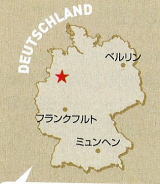
ミュンスター |
|
Utility Test は上級クラスの訓練経験を積んだ犬を対象とし、versatile hunting dogとしての肉体的・精神的能力が試されます。
① Water Group ② Field Group ③ Judged Throughout の3項目にて評価されます。
Water Group
① Search for a Duck ② Walking at Heel ③ Remaining by Blind
④ Steadiness by Blind ⑤ Retrieve of a Duck の5点について点数化され
ます。
Field Group
① Search ② Pointing ③ Steadiness on Game ④ Retrieve of Shot Bird
⑤ Retrieve of Dragged Game の5点について点数化されます。
Judged Throughout
① Use of Nose ② Desire to Work ③ Stamina ④ Obedience
⑤ Physical Attributes の5点について全てのtestを通して点数化されます。
Scoring System for the Utility Test
| Test |
Index Number |
Max. Points Attainable |
Prize Ⅰ |
Prize Ⅱ |
Prize Ⅲ |
| Water |
- |
- |
- |
- |
- |
| Search for a Duck |
4 |
16 |
16 |
12 |
8 |
| Walking at Heel |
2 |
8 |
6 |
4 |
2 |
| Remaining by Blind |
2 |
8 |
6 |
4 |
2 |
| Steadiness by Blind |
2 |
8 |
6 |
4 |
2 |
| Retrieve of a Duck |
3 |
12 |
9 |
6 |
3 |
| Field |
- |
- |
- |
- |
- |
| Search |
5 |
20 |
15 |
15 |
10 |
| Pointing |
4 |
16 |
16 |
12 |
8 |
| Steadiness on Game |
3 |
12 |
9 |
6 |
6 |
| Retrieve of Shot Bird |
3 |
12 |
9 |
6 |
3 |
| Retrieve of Dragged Game |
3 |
12 |
9 |
6 |
3 |
| Judged Throughout |
- |
- |
- |
- |
- |
| Use of Nose |
6 |
24 |
24 |
18 |
18 |
| Desire to Work |
5 |
20 |
20 |
15 |
10 |
| Stamina |
3 |
12 |
9 |
9 |
6 |
| Cooperation |
3 |
12 |
9 |
6 |
3 |
| Obedience |
3 |
12 |
9 |
6 |
6 |
| Total |
- |
204 |
172 |
129 |
90 |
*Use of Nose, Desire to Work, Search of Duck, Search, Pointing の5項目の評価点数が高いようです。
|
|
Natural Ability Test は生後16ヵ月までの犬を対象とし、優れたversatile hunting dogになるための生来の潜在能力が試されます。
① Field Phase ② Tracking Phase ③ Water Phase
④ Judgement of Physical Characteristics の4項目にて評価されます。
Field Phase
game bird を放ちこれに対する反応にて評価されます。① Use of Nose
② Search ③ Pointing ④ Desire ⑤ Cooperation ⑥ Gun Shynessの6点
について点数化されます。
Tracking Phase
flightless bird を用いtracking させます。retrieve は問いません。
① Use of Nose ② Tracking ③ Desire to Work ④ Cooperation の4点
について点数化されます。
Water Phase
① Water Entry ② Desire to Work ③ Cooperation の3点について
点数化されます。
Scoring System for the Natural Ability Test
| Test |
Index Number |
Max.Points Attainable |
Prize Ⅰ |
Prize Ⅱ |
Prize Ⅲ |
| Use of Nose |
6 |
24 |
24 |
18 |
18 |
| Search |
5 |
20 |
20 |
15 |
10 |
| Water |
5 |
20 |
15 |
15 |
10 |
| Pointing |
4 |
16 |
12 |
12 |
8 |
| Tracking |
2 |
8 |
6 |
4 |
2 |
| Desire to work |
4 |
16 |
16 |
12 |
8 |
| Cooperation |
2 |
8 |
6 |
4 |
2 |
| Total |
- |
112 |
99 |
80 |
58 |
*Use of Nose, Search, Water, Pointing, Desire to Work の5項目の評価点数が高いようです。 |
NAVHDA
(North American Versatile Hunting Dog Association) |
|
NAVHDAは1969年カナダ・トロント郊外にて設立されました。カナダ・北米ではそれまでは各犬種についてのクラブは存在していましたが、多目的狩猟犬(VHD)について統一された初めての組織が誕生したのでした。この組織についてここに少しご紹介します。
設立の目的
① VHD の訓練法を教育・伝授する事。
② VHD のTest を行い、その記録を残し公開する事。
③ これを基に選択的繁殖を促進し、繁殖をコントロールする事。
④ 正しく訓練された狩猟犬を用い、狩猟犬の酷使を避ける事。
を挙げています。
VHD犬種
現在NAVHDAでは下記の犬種をVersatile Breed として認め、
Dog Registry /Kennel Registration を行い、血統管理をしています。
Bracco Italiano(イタリアン・ポインティング)
Braque D'auverge
Braque Du Bourbonnais
Braqye Francais
Brittany(ブリタニー・スパニエル)
Cesky Fousek
Drentse Patridge
English Setter(英セター)
French Spaniel(フレンチ・スパニエル)
German Longhaired pointer(ジャーマン・ロングヘアード・ポインター)
German Shorthaired Pointer(ジャーマン・ショートヘアード・ポインター)
German Wirehaired Pointer(ジャーマン・ワイヤーヘアード・ポインター)
Gordon Setter(ゴードン・セター)
Irish Red&White Setter(アイリッシュ・レッド・アンド・ホワイト・セター)
Irish Setter(アイリッシュ・セター)
Large Münsterlander(ラージ・ミュンスター・レンダー)
Pointer(ポインター)
Portuguese Pointer
Pudelpointer
Slovensky Hrubosrsty Stavac
Small Münsterlander(クライナー・ミュンスター・レンダー)
Spinone(スピノーネ・イタリアーノ)
Stichelhaar
Vizsla(ショートヘアード・ハンガリアン・ビズラ)
Weimaraner(ワイマラナー)
Wirehaired pointing Griffon(ブリュッセル・グリフォン)
Wirehaired Vizsla(ワイヤーヘアード・ハンガリアン・ビズラ)
これらの犬種のほとんどが19世紀後半に産出されましたが、その中で
も Weimaraner ,Vizsla , Brittany, Small Munsterlander の4犬種は古い
犬種で他犬種の基礎になったと述べられています。
能力評価
テストは所謂 Trial(競技)を目的としておらず、今後の当該犬の訓練や
ブリーディングを計画するために用いられています。
① Natural Ability Test ② Utility Preparatory Test ③ Utility Test
④ Invitational Test の4段階に分けられています。
|
リサは”ブリタニー・スパニエル”と間違えられる事があります。確かに体の大きさや毛並み、猟犬の中でもHPR犬であり、運動能力の高い事など、KLMと共通する点が多く見られます。調べてみるとKLMとほぼ同時代に産出され、深い開発の歴史を持つ犬種だという事が判りました。
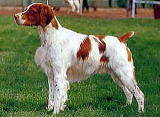 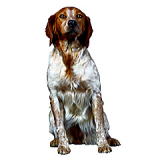
① ブリタニー・スパニエル(Épagneul Breton :エパニュール・ブルトン)の名称は発祥の地とされるフランス北西部”ブルターニュ地方”に由来します。 ブリタニーは12世紀頃には既に存在していた事が伝えられていますが、尾のないブリタニーの原種はブルターニュ地方の小さな町ポントウで1800年代中頃に生まれたとされています。ブリタニーを形態的、能力的に観察すると”ウエルシュ・スプリンガー・スパニエル”との類似性が多く、ブルターニュ地方とウェールズ地方に由来する犬種が、繰り返し異種交配され産出されたとする説もあります。
4世紀ケルト人は”ゲルマン民族の大移動”によって西方へ追われ、”ブリタニア”地方と呼ばれていた地域(現在のイギリス)に定着しました。以前からケルト人はこのブリタニア諸島(現ブリテン諸島)・アイルランド島に住みついていましたが、これを契機に全域に拡がって行き、”島のケルト”として繁栄しました。その後ゲルマン民族の一派であるサクソン人らが欧州大陸から渡って来ました。長い間民族間抗争が続き、ケルト人は現ウェールズとスコットランド、アイルランド島へ押しやられ、20 世紀に至るまでイギリスの支配を受けました。ケルト人はイギリスの圧政と飢餓に耐え切れずアメリカ大陸へ移住しましたが、一部はフランス西北部に移住し、この地を”小ブルターニュ”、本国は”大ブルターニュ:グレート・ブリテン”と呼ばれました。正にその土地で世界最小、最高品質のpointing dog "Épagneul Breton "が種として確立されたのです。白黒のブリタニーが生まれると仔犬は排斥され淘汰されました。毛色に限らず、耳の位置、鼻の色などイギリス犬と共通した特長を持つものは不可とされ、1907 年ブリタニーとして最初に登録されました。
"Spaniel " の語源は"Espanõl "であり、スペインに由来していることが判ります。スパニエルと呼ばれる犬種の基本的な血統は同じであると言われていますが、夫々どのような犬種が関与し、多くのスパニエル犬種に分化して行ったかは不明な点が多いとの事です。
② ブリタニーはスパニエルでありながら、獲物を発見するとポイントして知らせる能力を持っています。ブリタニーの狩りの手法はセッターに近く、セッターやポインターとの交配がブリタニーの天性の狩猟能力を強化したとの推測もあります。好奇心が旺盛なブリタニーは、常に辺りを偵察したり、狩りをしたり、遊んだり、動き回ることが大好きな犬種です。
独立心が旺盛ですが、人間の指示には敏感で的確に反応します。素晴らしい家庭犬にもなることもできます。ただ運動が足りないと、破壊行動を起こしたりする事もあるので十分な配慮が必要です。
③ FCI 分類では "Group 7 Pointing Dogs. Secion 1.2 Continental Pointing Dogs. Spaniel
Type." に分類されます。
pointing dog の中では最小で、体高・体長とも雄は50 cm 内外、雌は雄より各2 cm 程度小さく、体重は13-16 kg の範囲が標準で、中型犬に分類されます。ブリタニーの体躯は、体高と体長が同じ長さの四角形で、筋肉質で均整がとれています。尾は生まれつきの無尾または断尾されます。
色は白地にダーク・オレンジ(明るい茶色)・リバー(マロン)・黒の斑、黒・白・オレンジのトリコロール(三色)です。長年黒の毛色
を含むブリタニーが認められない時代がありましたが、白・オレンジを主とした個体群と黒を含む個体群との二つのパートが認められました。仏系と米系がありますが、どちらも同じ犬種です。米系の方がやや大型の傾向にあります。アメリカに渡ったブリタニーはその性能の良さ、従順さ、扱いの良さから大人気を博し、アメリカの鳥猟犬の40%を占めると言われています。 |
|
|
|
Lonesome Dove’s Kennel は1993年カナダで初めて設立・登録されたSmall Munsterlander Kennel です。 ドイツ・カナダ・アメリカから"breeding stock" を形成し、北米での猟犬としてのKLMの繁殖・訓練を手懸けています。
KLMは"Small Munsterlander Pointer"と呼ばれる事もありますが、"Versatile
Dog" として相応しくないとして名称から削除しています。またKLMの系統には2系統ある事などを言及しています。 (HPより引用)
Cranbrook はCanada西海岸, British Columbia 州の内陸部にあり、冬はロッキー山脈のスキー場への中継地です。冬季オリンピックのあったCalgaryの
隣町です。
History of the Small Munsterlander
Der Kleiner Munsterlander Vorstehhund, as the breed is known in Germany, originated in the 15th century as an offspring of the
Industrial Revolution. Falconry was the original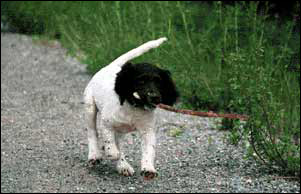 use of the breed but gunpowder’s creation led to the breed’s even more
common use as a gundog, as the common man’s place in society was elevated
to a place which allowed them to pursue hunting (an activity formerly only
for the wealthy land owners who could afford specialized dogs for the pursuit
of specific prey). use of the breed but gunpowder’s creation led to the breed’s even more
common use as a gundog, as the common man’s place in society was elevated
to a place which allowed them to pursue hunting (an activity formerly only
for the wealthy land owners who could afford specialized dogs for the pursuit
of specific prey).
New breeds were developed that would meet the new needs of the new hunting class. Versatile dogs that would point, track and retrieve birds and mammals on land; track and
retrieve birds and mammals in water; and locate, dispatch and announce
wounded big game.
The Small Munsterlander being one of the older longhaired versatile breeds
was likely used to develop some of the other longhaired breeds of this
class.
There was at one time two distinct “lines” of the breed. One with a fine body, narrow head, and of lighter weight. The other heavier boned, muscled and with a blockier head (obviously of greater
weight).
In North America we see many more dogs of the later body type. Males averaging
50lbs(22.7 kg). and females 42 lbs(19.1 kg). Yet the lightest female I
have owned was 34lbs(15.4 kg).
The colour in the Small Munsterlander is liver and white in any combination. The liver is dominant and shows up as large areas called plates or small areas referred to as ticking. When the liver areas cover a great potion of the body the coat colour is referred to as roan and the white appears almost silver. Many people prefer the solid liver
head but white on the face or head is not a fault.
Note I do not use the adjective “pointer” in the name of this breed. At one time in North America the breed was called the Small Munsterlander
Pointer. However, many years ago the then Munsterlander Club (a mixture
of Large and Small Munsterlander owners) agreed to drop the “Pointer” from
the name. (There was concern by some that the other skills that the breed
should possess to be truly “versatile” would be overlooked). The Small
Munsterlander Club of North America can’t even agree on the proper name
of the breed. Their club name and pedigree papers don’t use the word “Pointer”
but their website uses the word often. (The concern from the Johnny come
lately fanciers is that the pointing ability needs to be more prominent).
No registering body in North America uses the word “pointer” on their registration
papers.
|
|
|
Braunweiß
mit Platten
(Brown white with plates )
(白地に茶の板状斑)
|
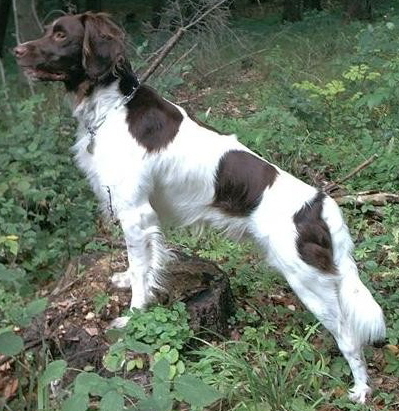

Euro
|
|
Braunweiß
gemantelt
( Brown white covered )
(白地に茶の外套)
|
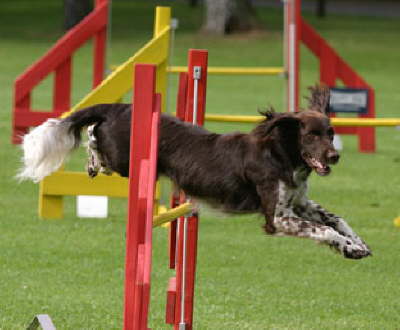
|
|
Hellschimmel
( Light mould )
(明るい点状斑)
|
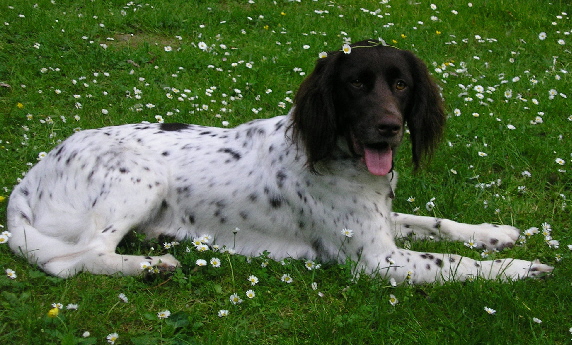
|
|
Braunschimmel
( Brown mould )
(茶色い点状斑)
|

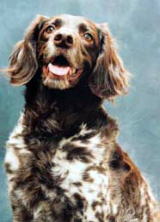
Coco |
|
Dunkelschimmel
( Dark mould )
(暗い点状斑)
|
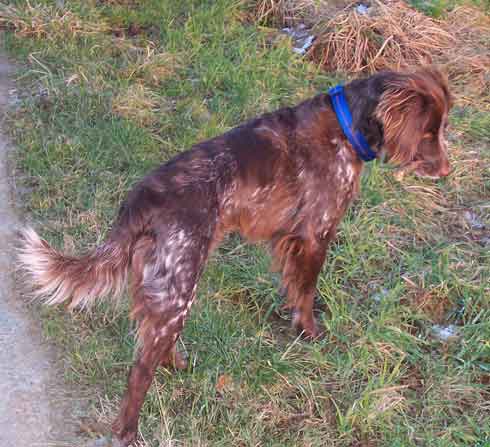 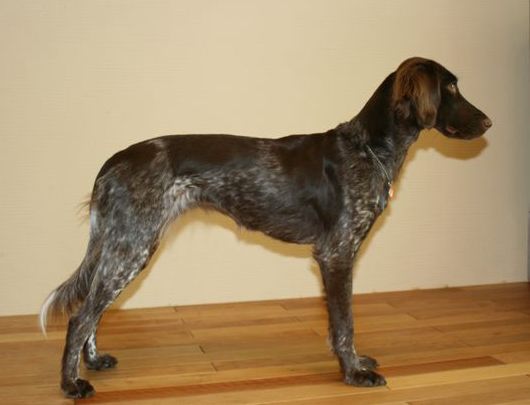
Lisa
|
|
|
① 起源は13-14 世紀とされていますが、1800年代に入り、ドイツで
は一般人もハンティングが楽しめるようになり、多くの犬種が作出さ
れました。
ドイツのオランダ国境近くのミュンスターラント付近で生まれた犬種
で、下記の犬種群に起源を持つと考えられています。
1. longcoated " Wachtelhunds "( German Spaniels )
2. the red Hanovian
Heath Hound
3. Heidewachtel " Heitmann line "
4. " Dorsten line "
② German longhaired pointer /
Setter / Spaniel 種等の交配によ
り作出
されたといわれています。
③ 大陸系ガンドッグに分類され、多目的鳥猟犬 (HPR:
Hunt Point
Retrieve dog )です。
④ ドイツクライナーミュンスターレンダー協会はは1912年設立されまし
た。 以後現在のスタンダードを設定しています。
⑤ kleiner とはドイツ語で「小さい」という意味です。一回り大きな
Large Munsterlander とは全く異なる犬種です。
ドイツでの正式名はKleine Műnsterländer Vorstehfunde( フォ-シュ
テフンデ )と呼ばれています。
⑥ 走ることが大好きで、泳ぎも得意と言われ、かなりの運動量を必要
とします。
⑦ 訓練の飲み込みが早く、飼い主や家族には忠実です。番犬として
も飼われていたので、他人に対しては警戒心を示す事もあります。
⑧ 体高 52-54
cm 体重 15 kg 前後です。
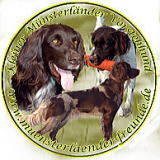
|
Classification F.C.I.
Group 7 Pointing
Dogs.
Secion 1.2 Continental Pointing Dogs. Spaniel Type.
With Working Trial
①General
appearance
Strong
and harmonious build of medium size, showing balanced proportions with a
lot of quality and elegance. Distinguished head. In upright posture the dog
displays flowing outlines with horizontally carried tail. Its glossy coat
should be straight or slightly wavy, dense and not too long. Its movement is
harmonious and far reaching.
Important propotions: The length
of the body from point of shoulders to the buttocks *1 should
exceed the height at the withers *2 by not
more than 5 cm. The length of the skull from the occiput *3
to the stop is equal to the length of the muzzle *4 from the
stop the nose.
Behaviour/ Temperament: The Small
Munsterlander is intelligent and capable of learning, full of temperament but
even, with steady character; its attitude towards people is alert and friendly (
suitable for family life ), with good social behabior and keeps close contact
with his master ( team spirit ); with passionate, persevering predatory
instinct, versatile hunting aptitudes and strong nerves and keeness for
game.
Head: The expression of the head is part of the
type.
Cranial region: skull *5 :
Distinguished, lean, flat to slightly arched. Stop: Only slightly pronounced but
distinctly recognizable.
②
Facial region
Nose:Wholecoloured
brown.
Muzzle: Powerful, long,
straight.
Lips: Short, tight closing, well
pigmented-wholecoloured brown.
Jaws/ teeth: Large white
teeth, Powerful jaws with regular and complete scissor bite with the upper teeth
closely overlapping the lower teeth and set square to the jaws. 42 teeth
according to the dentition formula.
Cheeks: Strong, well
muscled.
Eyes:Of medium size, neither protoruding nor deep set. As dark broun as possible.
Eyelids *6 tight fitting
to the eyeballs *7, covering the haws
*8.
Ears: Broad, set on high, lying close to the head,
tapering towards the tips, ear leather should not reach beyond the corner of the
mouth.
Neck: Its length in balance with the general
appearance; gradually widening towards the body. Napeline *9
slightly arched, very muscular. Tight fitting throat skin.
③
Body
Topline:Slightly sloping in a
straight line.
Withers: Pronounced.
Back:
Firm, well muscled. The spinal processes *10 should be
covered by the musculature.
Loins: Short, broad,
muscular.
Croup: Long and broad, not short slanting, only
slightly sloping towards the tail; well muscled. Broad pelvis
*11.
Chest: Rather deep than broad, breastbone reaching
as far backwards as possible.
Ribs *12 well
arched.
Underline and belly
*13 Slight tuck-up towards the rear in an elegant curve;
lean.
Tail: Set on high, with long flag, strong at the base,
then tapering. Of medium length. Carried downwards in repose, horizontally and
not too high above the level of the topline with a slight sweep when in action.
In the lower third it may be curved slightly upwards.
④
Limbs
Forequarters:
*14 Viewed from the front straight and rather paralle, viewed from the side
legs set well under the body. The distance from the ground to the elbows
should be approximately equal to the distance from the elbows to the withers.
Shoulders: Shoulder blades lying close to the body, strongly muscled. Shoulder
and upper arm forming a good angle of approxymately 90°. Upper arm: As
long as possible, well muscled. Elbows: Close to the body, neither turning
in nor out. The upper arm forming a good angle with forearm. Carpal *15
joint: Strong. Pasterns *16: Very slightly sloping. Front feet:
Round and arched with well knit toes and sufficiently thick, tough, robust pads.
Not too heavy coat. Parallel in stance or in movement, neither turning in nor
out.
Hindquarters:*17: Viewed from the rear
straight and parallel. Correct anguration in
stifles *18
and hocks *19. Strong bones. Upper thigh: Long, broad,
muscular; forming a good angle with the pelvis. Stifle: Strong, upper and lower
thigh forming a good angle. Lower thigh *20: Long, muscular
and sinewy *21. Hock joint: Strong. Metatarsus
*22: Short, perpendicular to the ground. Hind feet: Round and arched with
well knit toes and sufficiently thich, tough, robust pads; not too heavy coat.
Parallel in stance or in movement, neither turning in nor out. Gait/ Movement:
Ground covering, with good drive and appropriate reach, straight forwards and
parallel coming and going, with well upstanding posture. Pacing gait is
undesirable. Skin: Tight fitting, without folds.
⑤ Coat
Hair:Dense, of medium length, not or only
slightly wavy,close lying, water-repellent.
The outlines of the body may not
be hidden by too long coat. By its density it should provide as good a
protection against weather, unfavourable terrian conditions and injuries as
possible. Short smooth coat on the ears is faulty. Forelegs feathered, hindlegs
with breeching down to the hocks, tail with a long flag and white tip, abundant
coat on the forechest is undesirable.
Colour: Brown-white or
brown roan with brown patches, brown mantle or brown ticking; blaze
permitted.Tan coloured markings at the muzzle, the eyes and around the anus are
permissible ("Jungklaus markings").
Size: Height at withers: Dogs: 54 cm. Bitches: 52 cm A deviation of +/-2 cm
is within the standard.
⑥ Faults
Any departure of the
foregoing points must be considered a fault and the seriousness with which the
fault should be regarded should be in exact proportion to its
degree.
Severe faults
・Deviation of the size limits
between +/-2 cm and +/-4 cm.
・Clumsy, big-boned confomation.
・Serious
deviations from the correct proportions of body, neck and
height and
withers.
・More than 50% of the nose flesh-coloured or
spotted.
・Pointed muzzle. Dished nose bridge.
・Eyes too light. Light
yellow hawk eyes *23.
・Serious lack of depth of chest or
too flat sided brisket *24. Barrel shaped
brisket.
・Elbows hevily turning out or in.
・Steep
pasterns.
・Strongly cow hocked or barrel legged, in stance as well as in
movement.
・Splayed toes; flat feet.
・Clumsy movement.
・Coat too
curled.
・Smooth hairless ears or too long and curled fringes on the
ears.
Eliminating faults
・Fearfulness, aggresiveness,
game or gun shyness.
・Size deviations of more than +/-4 cm.
・Untypical
sexual characteristics, sexual malformations.
・Completely depigmented
nose.
・All deviations from the correct scissor bite except the lack or
excess of
two P1.
・Split jaw or split lip.
・Ektropion *25, entropion *26, distichiasis *27, bird eye.
・Pronounced
dewlap.
・Distinct roach back, swayback; crooked spine
*28.
・Malformation of the ribcage *29, such as sterunum *30 cut off.
・Kinky tail, ring tail, other tail
abnormalities like too short or too long tail.
・Wholecoloured
dogs.
Any dog clearly showing physical or behavioural abnormalities
shall be
disqualified.
N.B.: Male animals must have two apparently
normally developed testicles *31fully descended into the scrotum *32.
* Asterisk
*1 臀部(尻) *2 き甲 *3 後頭部 *4
口吻 *5頭蓋 *6 瞼 *7 眼球 *8 瞬膜 *9 うなじ *10 棘突起
*11 骨盤 *12 肋骨 *13 腹部 *14 前肢
*15 手根 *16 繋 *17 後肢 *18 膝 *19 飛節(踵) *20 下腿
*21 腱 *22 中足*23 猛禽眼 *24 胸部
*25 眼瞼外反症 *26 眼瞼内反症 *27 二重睫毛 *28 脊椎
*29 胸郭 *30 胸骨 *31 睾丸 *32 陰嚢
KLM紹介
KLMclub案内
KLMclub規約 |

|


